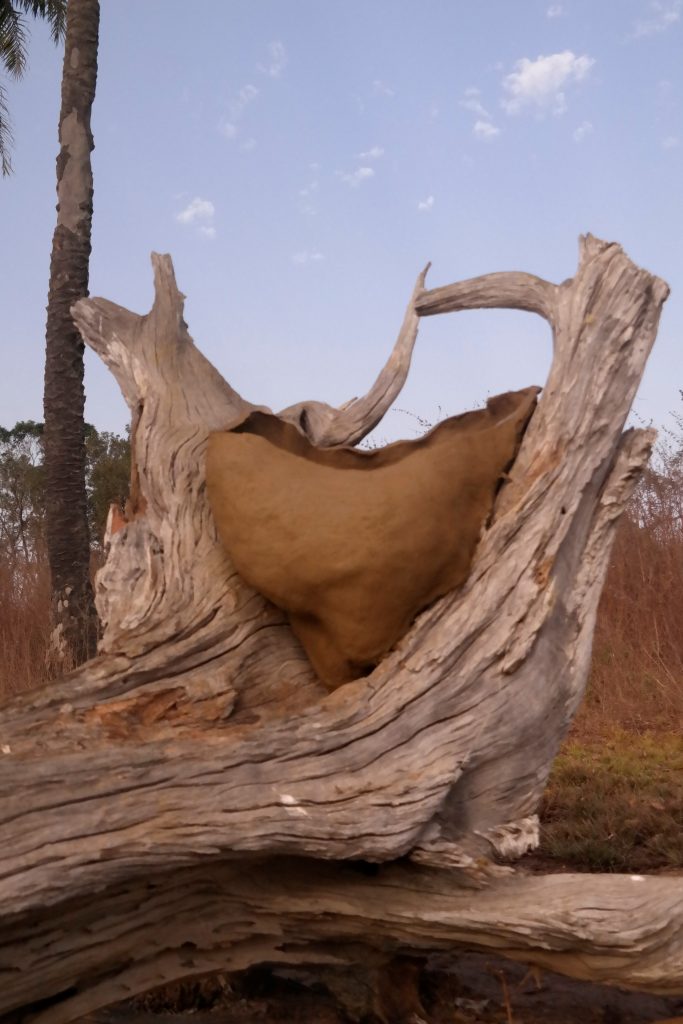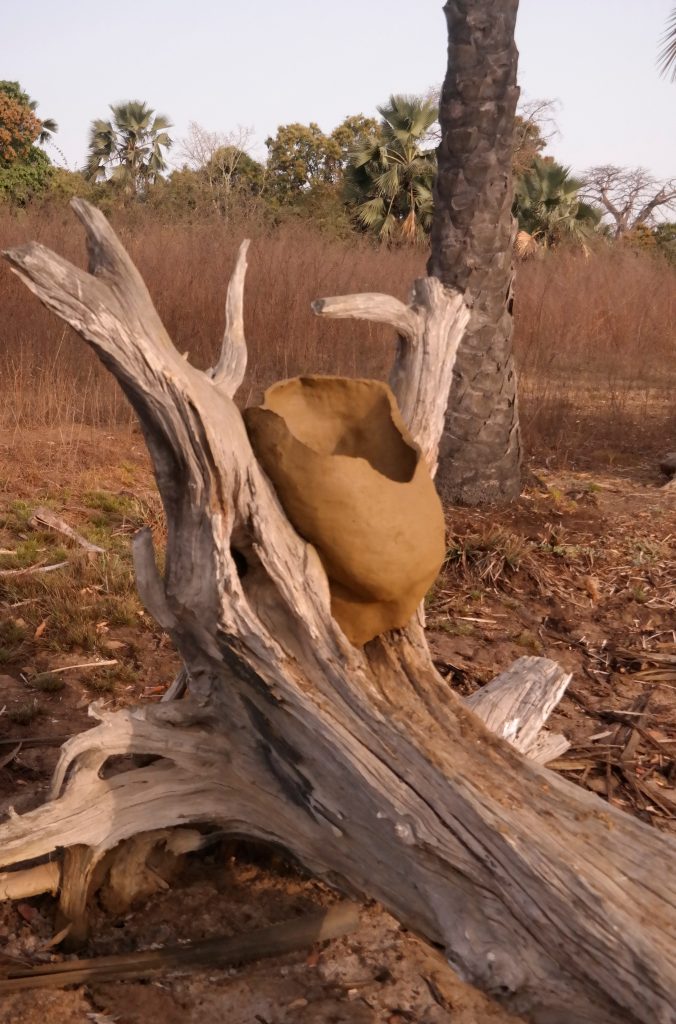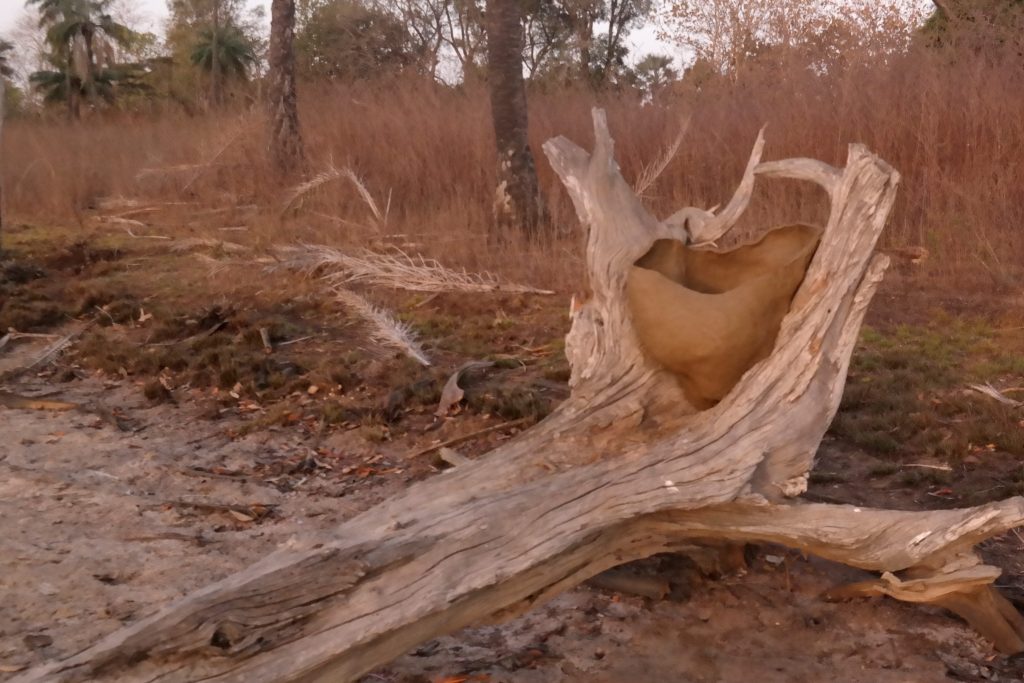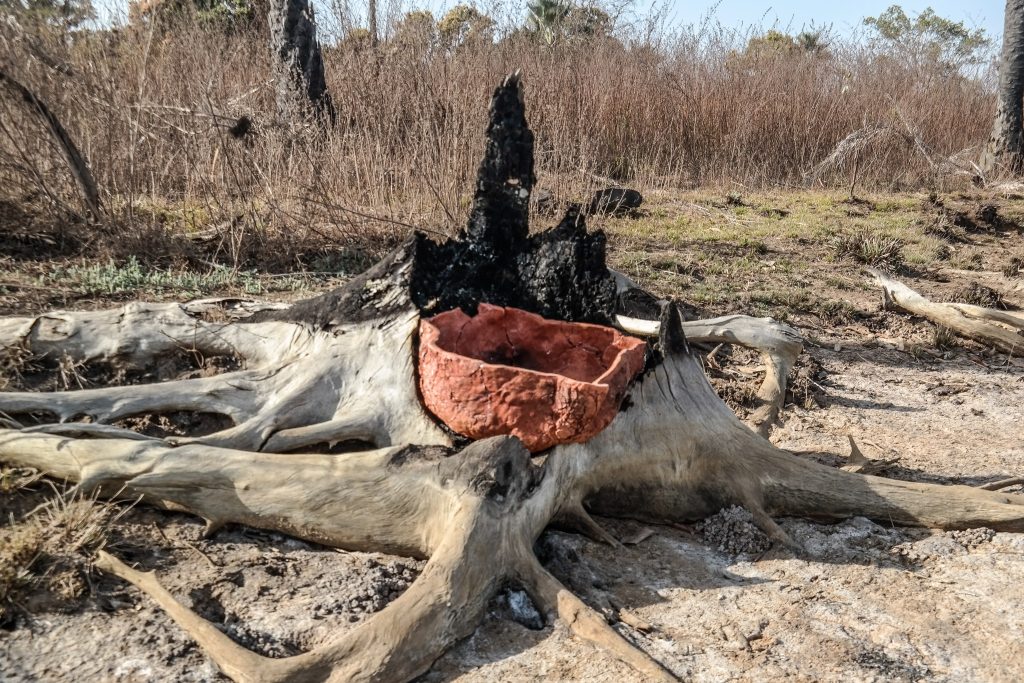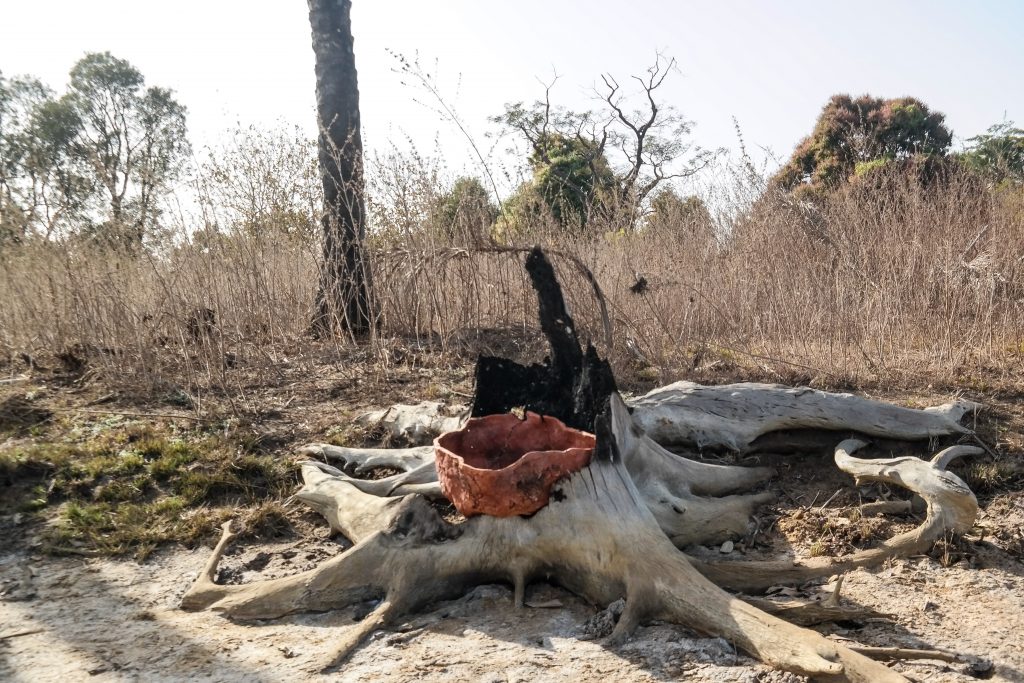self-won clay, wood, 50 centimeters high, Gambia
Playing with the elements
Slow art
With particular focus on working with river clay and other natural materials readily available in this subtropical climate.
By Thea van Vliet, visual artist specialised in sculptural ceramics.
Background, Thea van Vliet
In 1990, when I took a study trips through West Africa, the amazing inventiveness of the Africans made a great impression on me. They had no money or overfilled shops, so they made their own beautiful, imaginative tools. I also visited potters who created vessels from the slip made from the earth alongside where they were sitting, and built their own kilns to fire the pots, fueled with available hardwoods. Their metalwork and textiles were also wonderfully inventive and imaginative.
It reminded me of the way I felt when I was small, amazed by the automatic washing machine newly delivered to our home. How could people work with something so impossible to understand? It was a moment of astonishment that still inspires my life and my work today.
After graduating from art school, I was expected to purchase expensive machines and kilns in order to set up my own studio. Here in the Netherlands, that is what we do, rather than working directly in the untamed nature that surrounds us, using materials that it directly provides.
I was searching for somewhere to fire clay with wood, without the restrictions of kilns built to specific measurements. Why should we have to adapt the work to the kilns, instead of the kilns to the work?
The answer
I found my answer in a brick factory in Boom, Belgium, where I organized working periods for professional artists, who produced monumental sculptures from local clay, fired with wood in ovens we built ourselves. It was a wonderful experiment with varying results, and the kilns were objects of art in their own right.
What is so wonderful about firing clay with wood is that the process – the flames – is visible on the finished objects, in the form of diverse shades of color. It gives beautiful results, as well as insight into the firing process.
I was able to continue this method of working when I was invited to teach a course in The Gambia on working with available materials.
The idea was that European (primarily Dutch) students and local Gambians could exchange knowledge and expertise.
Project Gambia
When I traveled to the Gambia in 2014 to investigate the possibilities, it was abundantly clear to me that it's overwhelming nature, with flora that grows so much faster, and is so fascinating, with all its shapes and colors, all offered countless opportunities. I used local river clay and build ovens of local mud bricks used for buildings. I was inspired to draw and learned how to weave both small and large shapes from palm leaves. Some of these shapes served as molds for pieces made of clay. I also dug shapes into the ground that served as molds for clay objects. We fired them at 800°C in our homemade kilns.
In 2016 and 2017, I gave my first workshops in The Gambia, based at Soforal Lodge (see www.soforal.nl and www.theavanvliet.nl/cursussen). Participants were asked to bring as few materials and tools as possible, in order to be receptive to the materials and possibilities they discovered there.
In addition to making individual pieces from clay that we fired in kilns we built ourselves, we also created collective installations from mangrove roots and mud bricks that we stacked and sculpted.
I took the opportunity of staying on in The Gambia and moving further into the bush, armed only with sketch pads, pencils and my camera. I wanted to be inspired by whatever I encountered. I found an oasis of tranquility in the small village of Tumani Tenda, with its own eco-lodge. We had come here with the students and created our sculptures of mangrove roots here. A simple walk along the river produced countless inspired ideas.
Two dimensional research
On the first morning, I set out with pencil and paper, seeking a shady place to draw a stunning piece of driftwood. What I discovered was that the semitropical sun was so strong, the shadows so powerful on my bright white paper, that it was almost impossible to see what I was drawing. The shadows moved with the wind. Amazing shapes seems to draw themselves, tangible yet intangible. All I had to do was follow the lines, fill in the shadows and create some accents later on. This was so clearly connected to what I am always seeking in my work, along with working as directly as possible with my materials: trying to visualize the intangible.
Tribute
During my walks along the river, I came across many dead trees, some tropical hardwoods hundreds of years old. Some had burned. The stunning shapes they left behind gave me the idea of honoring these trees with a ceramic vessel in these burned-out trunks.
Made from the clay beneath my feet, we fired it in a kiln built with local Gambians – who were also now making their own clay pots for the first time. Charcoal is a common fuel there. We slowly brought our charcoal-fired kiln to the requisite 800°C. Then I returned my new vessel back to the trunk of the burnt-out tree.
Project Zeeland, kunstschouw
In June of 2017, I used this same method for the Kunstschouw art event in Zeeland, the Netherlands, where I also exhibited works made in Boom, Belgium. In this case I used local clay fired in a home built kiln made of the same clay. I created ‘prints’ of the local Zeeland landscape and its regional flora, as well as the islands region, destined to be incorporated into a monumental panel. The shadow drawings made in The Gambia are also being incorporated into porcelain plates, and the amazing termite mounds of West Africa are being incorporated into a Gothic ceramic installation. The termites begin these great mounds by wrapping blades of grass. This too has been an inspiration.
Thea van Vliet
